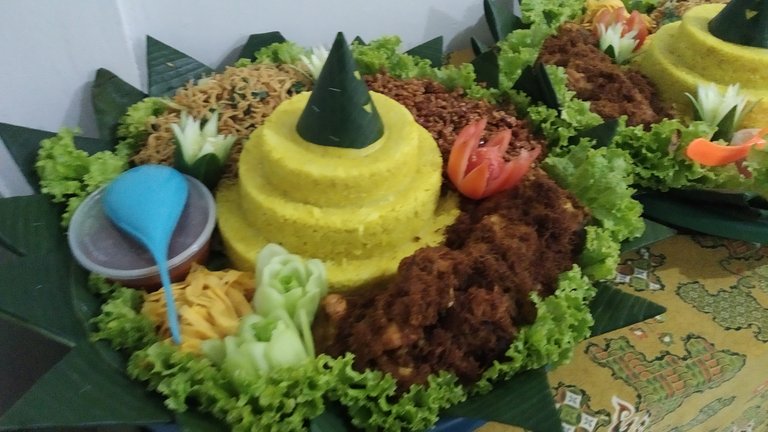
Nasi Tumpeng is a cone-shaped yellow rice that has a philosophy or that takes a description of the geography of the country which is surrounded by mountains.
Tumpeng rice was once a sacred dish used by the community to glorify the earth's surface which towered above the surrounding plains.
Tumpeng, which is an abbreviation of yen metu kudu sing mempeng, has a meaning if you have to live with sincerity. Tumpeng rice, which comes from ancient traditions, has meaning and significance in every part and form of its presentation.
These meanings are like the shape of a cone of rice cone which has the meaning of God's majesty. While vegetables are described as natural plants. As for the side dishes, such as fish, beef, goat, it indicates the animal's natural condition.
In addition, salted fish is defined as mutual cooperation, boiled eggs are described as a round determination, while human life is described directly with the rice itself. In the color of the rice, tumpeng has a different meaning.
If the tumpeng rice is white, it symbolizes purity. While yellow has the meaning of wealth and noble morals. As previously mentioned, every presentation, even the shape of the cone, has a meaning and the way to cut the cone also holds meaning.
Cutting the cone must start from the top. The top must be cut by a respected person or an elder. Only after that continued by people who have a celebration.
Although tumpeng existed long before the arrival of Islam on the island of Java, in its development, nasi tumpeng was associated with Javanese Islamic philosophy and was considered an ancestral message of supplication to the Almighty.